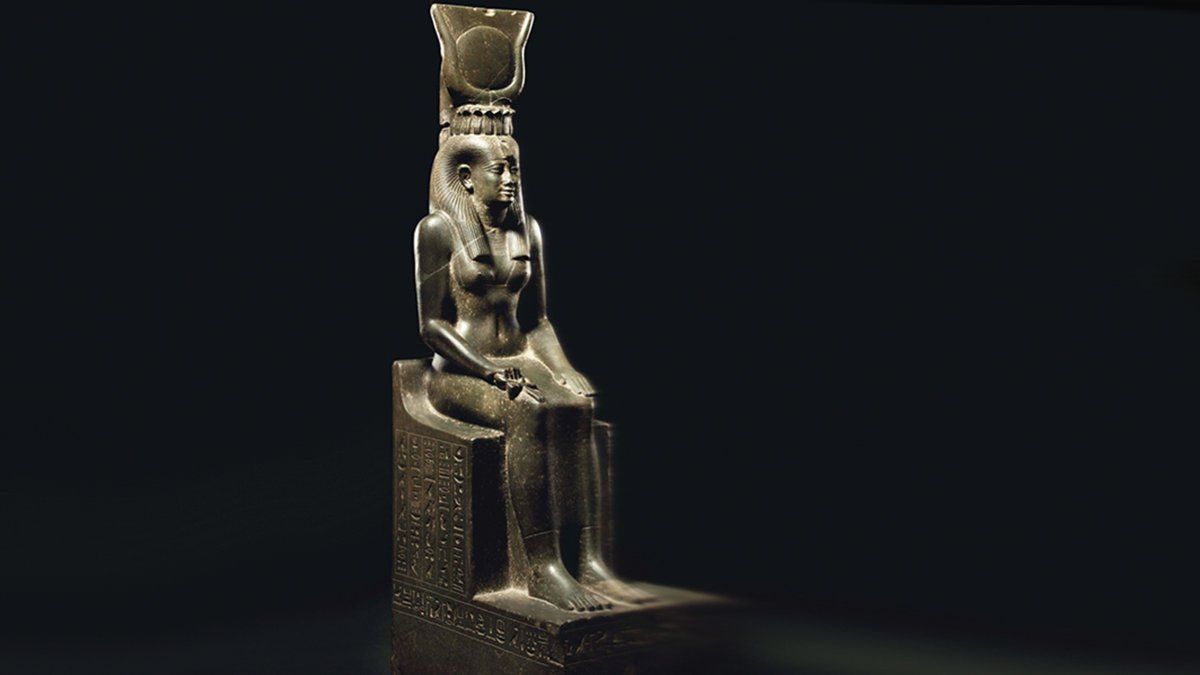AN EGYPTIAN GREYWACKE ISIS from the Late Perios of Dynasty XXVI, CIRCA 664- 525 B.C. sits as one of the most expensive artifacts ever sold. Find out the reason why!
First acquired by a French diplomat in Alexandria back in the 1840s, the EGYPTIAN GREYWACKE ISIS has traversed along various coastal lines to finally be stationary in its current owner’s possession. It represents a statue of Goddess ISIS from Egypt, sitting on a throne with her legs together and her hands in a resting position on her lap. On her head, she wears a tripartite wig that is overlaid by a vulture headdress holding shen-signs in each of its talons. One can also notice the sun-disc between cow’s horns on the goddess’s head. The extended cosmetic lines, raised rims, eyebrows arching above in raised relief and her almond-shaped eyes are also inscribed carefully. A slight smile under a straight nose is also visible. Well modelled ears are inscribed on four sides of the throne. She holds an ankh-cross in her right hand. She is wearing a tight-fit halter neck dress that drapes down to her ankle. Along with this, you can also spot a magical incantation for the Royal Acquaintance, Ptahirdis, True of voice, son Wepwawetemsaf, begotten of Merptahites.
The mighty goddess statue also has a story connected to it.
It was believed to be a healing statue, worshipped by followers to get immunity against certain diseases. Devotees would pour water over the magical text inscribed on the statue to be healed and protect themselves from venomous animals. Researchers say, the statue might have been in an open space to make it accessible for whoever wanted to call upon the goddess’s magic. Either in the temple of Isis in Giza or the open courtyard of Ptahirdis’s funerary complex.
The iconic goddess Isis has been worshipped since the early days of the Egyptian civilisation. She is regarded as the mother of par excellence, magician and protectoress and one who personifies caring for her family. She has been surrounded by stories of various myths that represent her as an authoritative figure in Egypt’s cultural roots. In one such myth, she uses the secrets of mummification on Osiris, her brother and husband, in order to preserve his body after he is kidnapped by the jealous Seth and his body parts are scattered along the Nile.
Price: The statue was sold at a whopping price of nearly $6 million.















